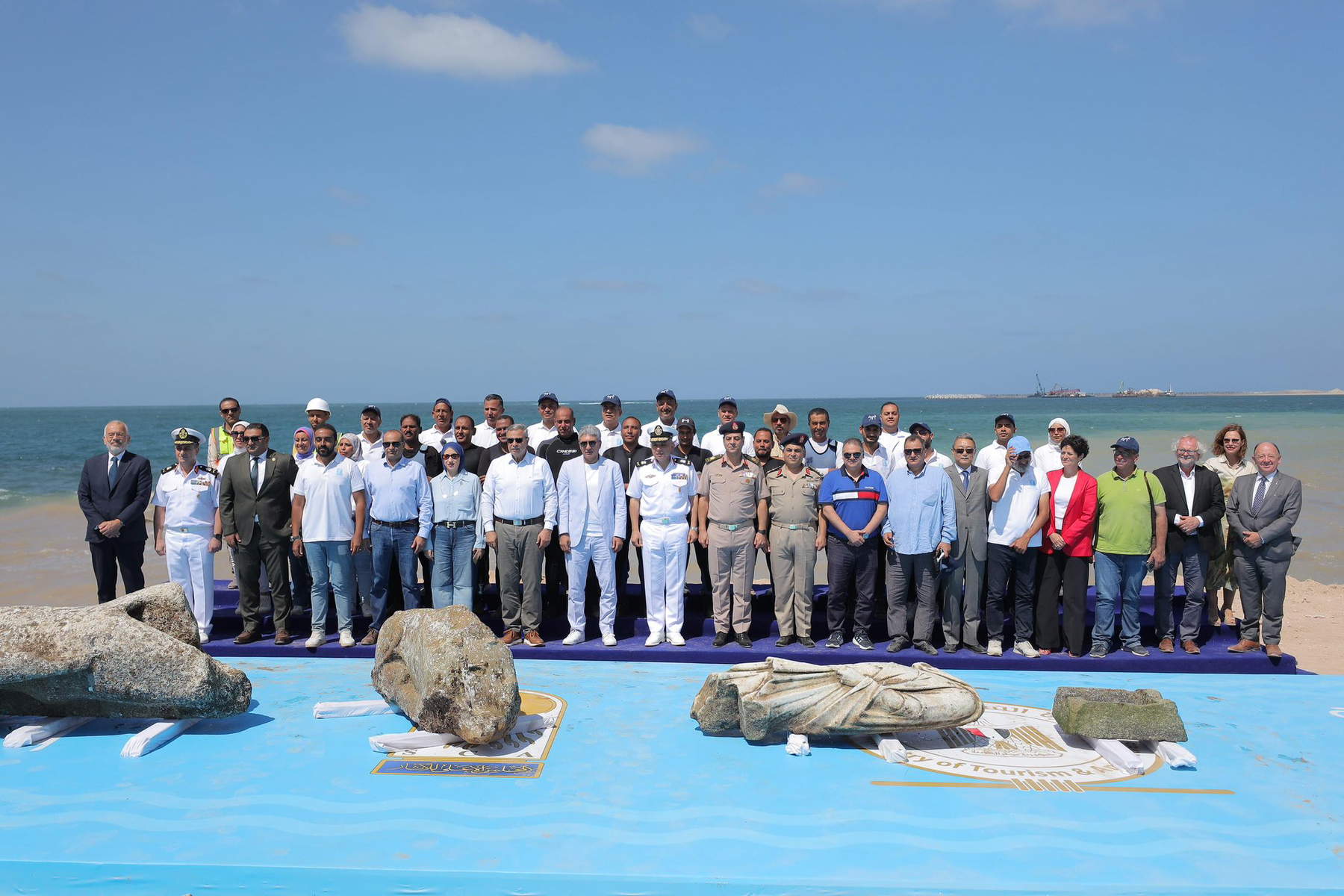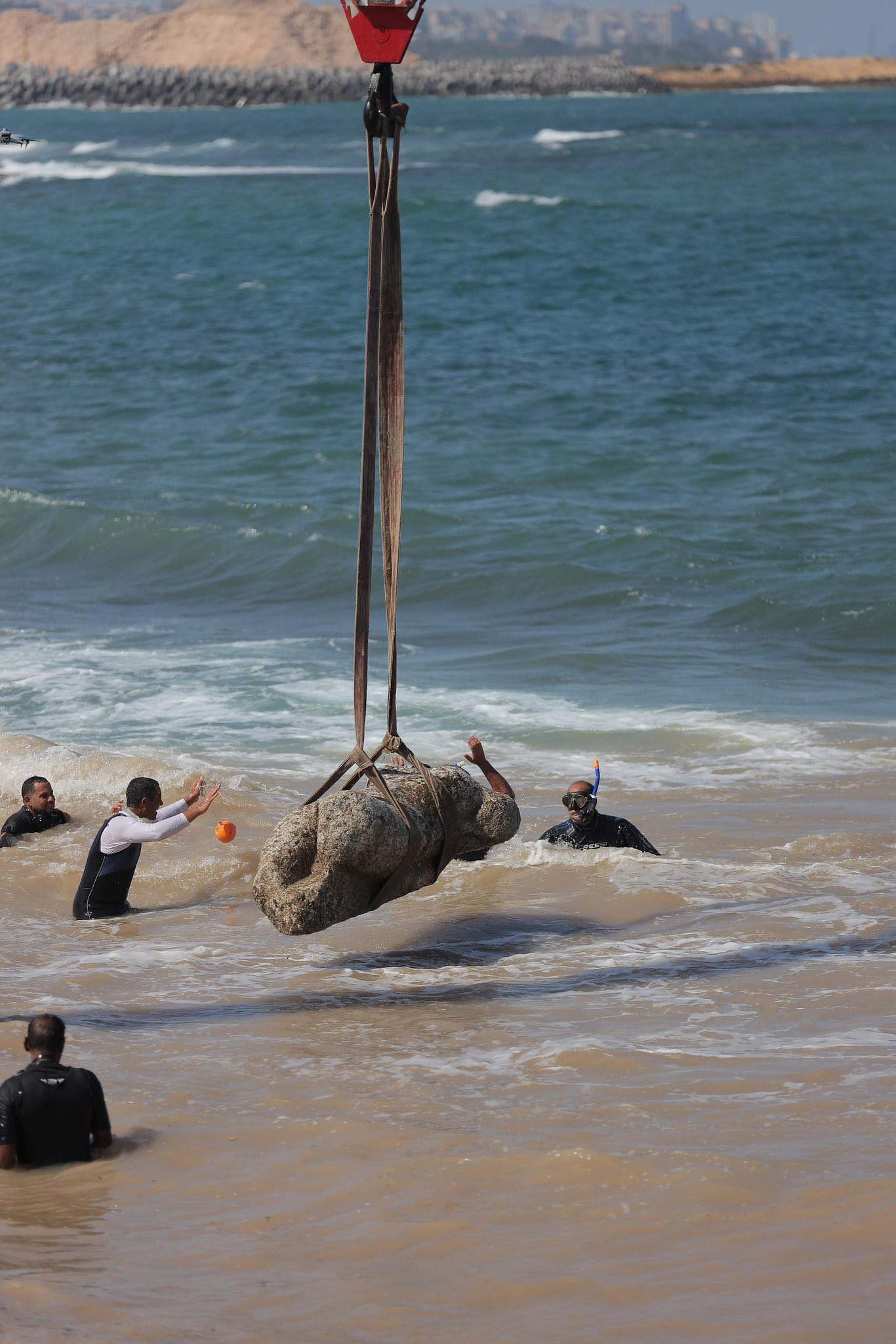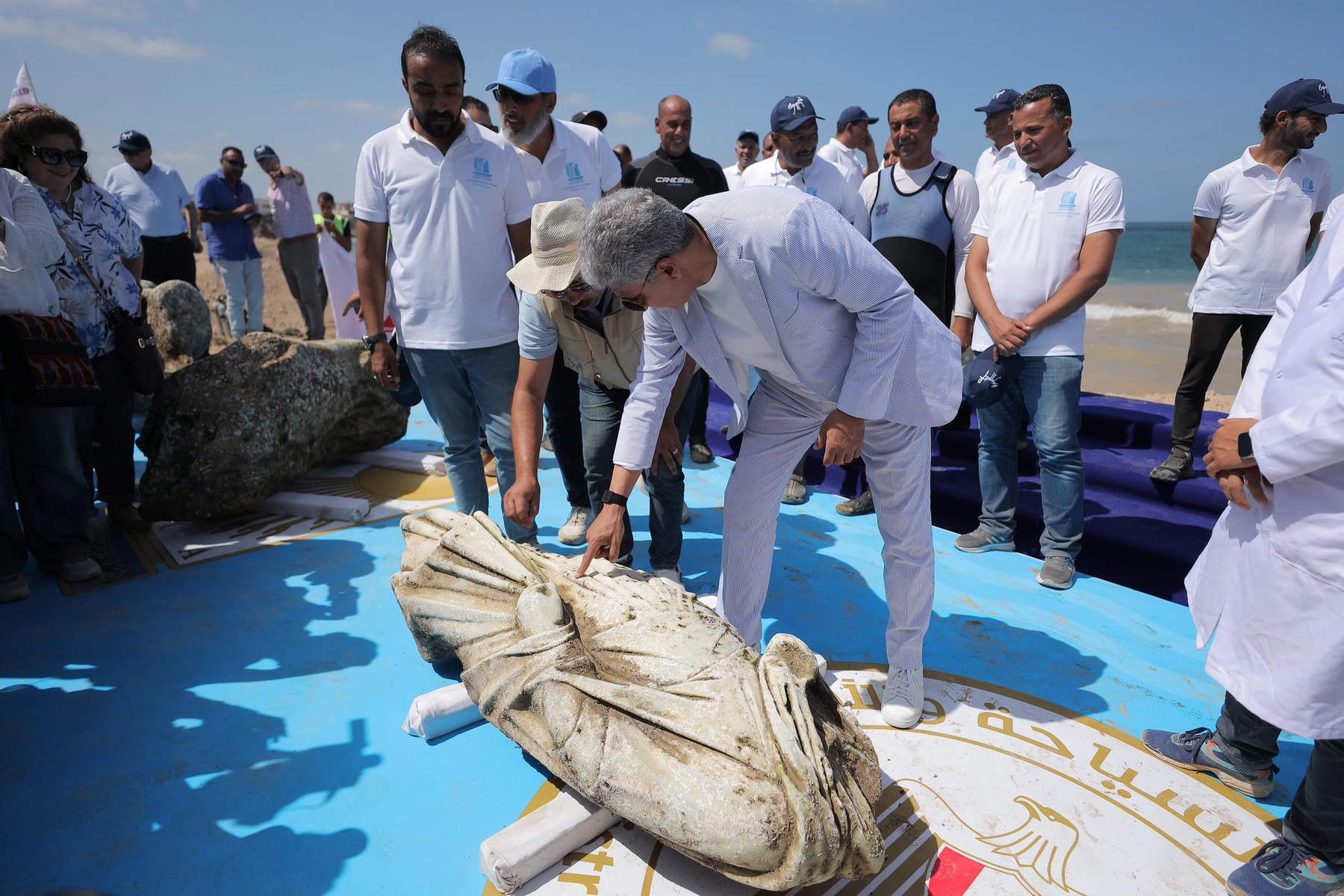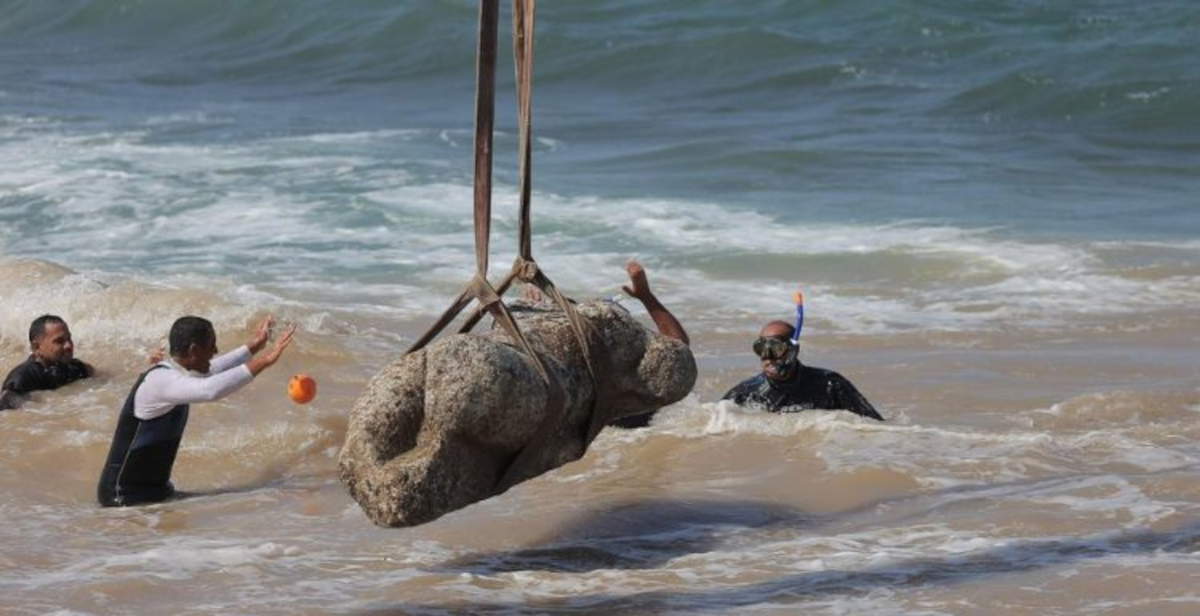At Abu Qair, northeast of Alexandria , Egypt, three statues of great historical significance have resurfaced from the waters of the Mediterranean Sea. This is the first underwater recovery operation of this magnitude in Egypt in the past twenty-five years. The removal was witnessed by the country’s leading civil and military authorities, including the Minister of Tourism and Antiquities, Sharif Fathi, Alexandria Governor Ahmed Khaled Hassan Saeed, the commander of the Naval Forces and the commander of the Northern Military Zone.
The three works extracted include a colossal quartz statue depicting Abu Houl, bearing the cartouches of Ramses II, a granite figure belonging to an unidentified personage of the late Baltic period, damaged at the neck and knees, and a white marble statue depicting a Roman nobleman. The removal took place under extensive media coverage, with foreign ambassadors and consuls in attendance, as well as representatives of the Supreme Council of Antiquities and the Egyptian General Authority for the Promotion of Tourism.

Minister Fathi expressed gratitude to the Armed Forces, Navy and Military Engineering Authority for their cooperation in the search and recovery operations. He also emphasized the political support received by the archaeological sector, pointing to it as a crucial element in safeguarding national cultural identity. In fact, according to the minister, Egypt will continue to comply with the guidelines of the UNESCO Convention on Underwater Cultural Heritage, keeping some of the artifacts on the seabed and transferring others to the surface following strict scientific criteria and regulations. The governor of Alexandria, Ahmed Khaled Hassan Saeed, on the other hand, highlighted the value of the discovery as a restoration of a part of Egypt’s history, linking it to the ongoing process of urban transformation in the region. He also referred to ongoing infrastructure projects, including the metro and the development of the Abu Qair port, which he described as key elements for economic growth and land development.
Secretary General of the Supreme Council of Antiquities, Mohamed Ismail Khaled, also remarked on the importance of the site. Abu Qair, he recalled, represents an exceptionally important archaeological area that has already been the subject of previous research campaigns. The current operation comes twenty-five years after the last major underwater recovery activity, which followed the signing in 2001 of the agreement with UNESCO for the protection of the underwater heritage.

The most recent investigations have confirmed the presence of stable structures that remained submerged for a long time, probably due to geological phenomena or earthquakes that caused them to sink below sea level. According to the data collected, the site would correspond to a city of Roman times, complete with buildings, temples, water cisterns, fish-farming tanks, a harbor and docks. Some scholars believe it may be an extension of the city of Canopus, significant remains of which had already been found in the same area. The stratification of the site has yielded evidence referable to different historical phases, from the Pharaonic to the Baltic, Roman, Byzantine and Islamic periods, delineating a continuity of settlements that makes Abu Qair one of the main centers of study for underwater archaeology. The research conducted has also resulted in the discovery of a wide range of artifacts: amphorae bearing trade stamps and production dates, the remains of a merchant ship with a cargo of dried fruit and a copper weighing scale, royal statues and Oushabti figures, stone anchors, coins dating from the Roman, Byzantine and Islamic eras, as well as pottery, dishes, breeding tanks and a 125-meter-long sea walk.

Egyptian authorities have therefore announced that research will continue in the coming months and that additional finds, including an archaeological vessel, could be unveiled once the exploration and study phases are completed. The prospect is one of expanding knowledge about Alexandria’s underwater heritage in a context that remains largely unexplored. The discovery of Abu Qair is part of a national program to enhance the underwater heritage, promoted by Egyptian institutions and supported by several international bodies. The goal is twofold: on the one hand, the preservation of unique historical relics, and on the other, their integration into the country’s tourism development strategy. According to data provided by the Ministry of Tourism, Egypt welcomed about 15.8 million visitors over the past year, with plans to increase these numbers further through diversification of cultural offerings.
 |
| Three statues resurface at Abu Qair (Alexandria, Egypt): first discovery in 25 years |
Warning: the translation into English of the original Italian article was created using automatic tools. We undertake to review all articles, but we do not guarantee the total absence of inaccuracies in the translation due to the program. You can find the original by clicking on the ITA button. If you find any mistake,please contact us.